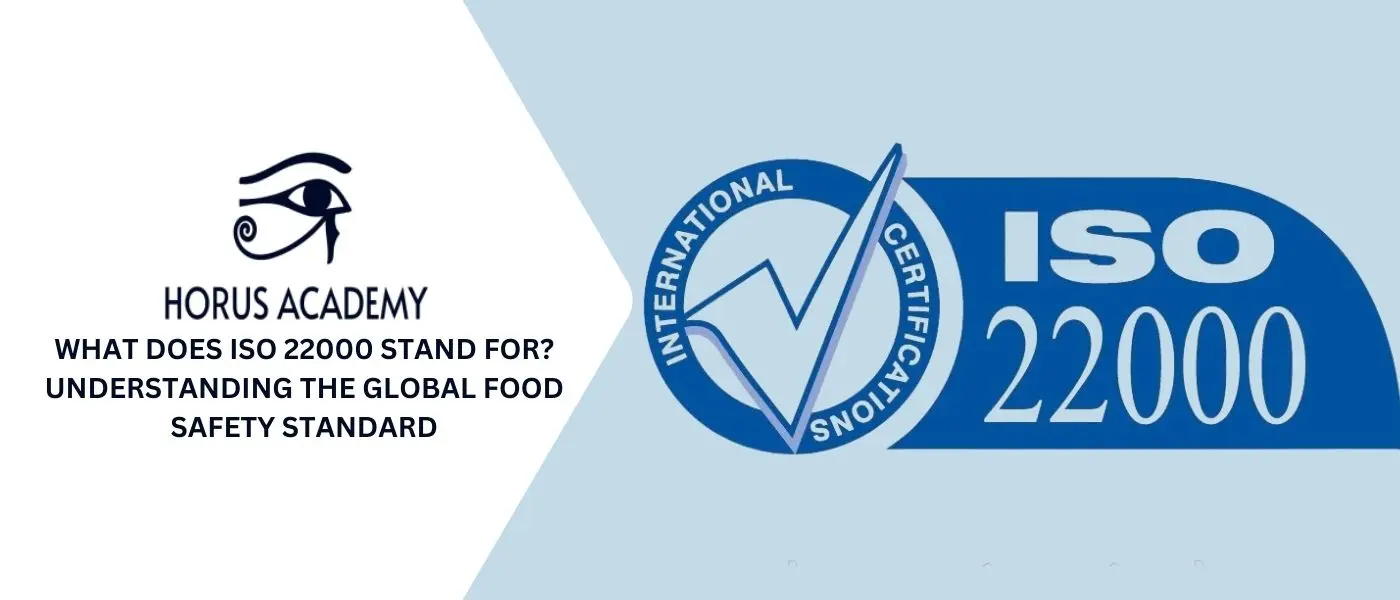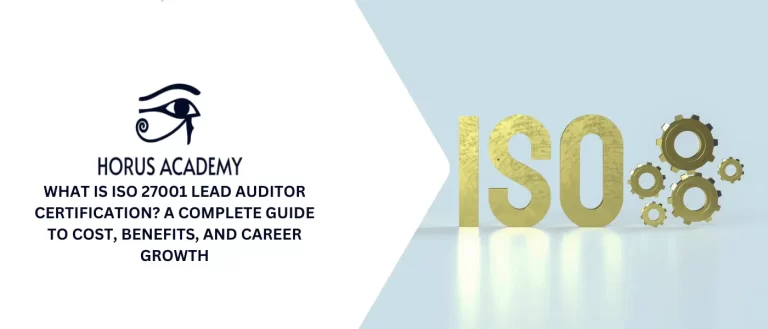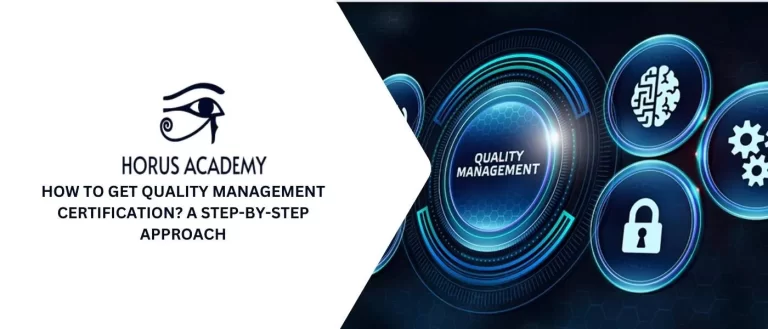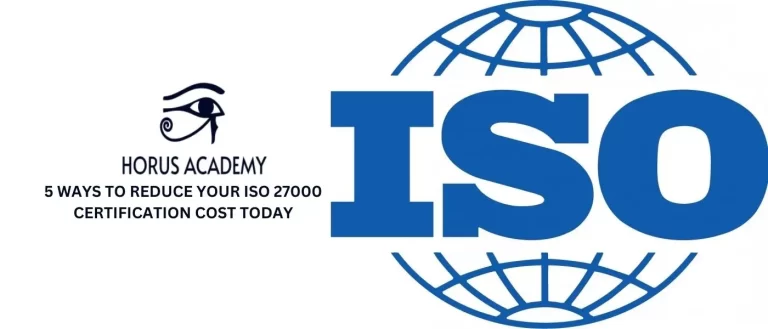
New organizations come to light daily in our fast-paced world, especially in the food industry.
These businesses across the food supply chain must follow strict international standards to ensure the safety of their products, and one of these standards is ISO 22000.
But what does ISO 22000 stand for? The answer to this question is in this article along with the most important information about ISO 22000 such as the evolution and history of ISO 22000.
This article will also cover the key components of ISO 22000, the certification process, and the benefits of implementing ISO 22000.
Table of Contents
ToggleIntroduction to ISO 22000
Before we dive into what does ISO 22000 stand for, we will give you a quick introduction. ISO 22000 is one of the global standards for food safety management.
It describes the requirements that should be followed by all the organizations in the food chain field to control food safety hazards and make sure it’s suitable for human consumption.
ISO 22000 works together with other ISO management standards, such as ISO 9001 and HACCP principles to guarantee the safety of the products and the well-being of the consumers.
What Does ISO 22000 Stand For
Many people wonder what does ISO 22000 stand for? Well, now is the time to understand its meaning.
ISO 22000 is a food safety management system by the International Organization for Standardization (ISO).
To guarantee that food is safe to consume, the food industry can regulate food safety risks in an organized way through the use of a Food Safety Management System (FSMS). It consists of:
- Identifying the Food Safety Hazards: identifying the risks that require control.
- Using Control Measures: The steps are required to manage certain risks.
- Validation and Monitoring: Evaluating the controls to make sure they are effective and keeping an eye on them.
- Documentation and Record-Keeping: Maintaining documentation to show that the controls are effective and in place.
Key Components of ISO 22000
After knowing what does ISO 22000 stand for, it’s time to understand the key components of ISO 22000. There are four main components as follows:
- Interactive Communication
To guarantee safety throughout the food chain, ISO 22000 highlights the significance of open and honest communication between all parties involved, including suppliers, consumers, and regulatory agencies. - System Management
This standard uses a structured management system approach to continuously enhance food safety performance by methodically addressing issues and implementing solutions. - Prerequisite Programs (PRPs)
PRPs create the fundamental elements required to keep a clean environment, serve as the cornerstone for food safety, and include things like staff hygiene, sanitation, and facility upkeep. - HACCP Principles
HACCP concepts are included in ISO 22000 to identify, assess, and manage risks to food safety.
This proactive strategy guarantees that food safety hazard analysis is done to control the risks before they affect the final results.
Evolution and History of ISO 22000
Understanding the history of PECB ISO 22000 Foundation is as important as knowing what does ISO 22000 stand for, Which is why we’ll give you a brief idea about how it all started.
Before ISO 22000, many businesses used the Hazard Analysis and Critical Control Points (HACCP) system, which was controlled by national regulations.
However, the need for a uniform set of norms to ensure safe food production and handling methods worldwide became evident as the food business grew globally.
As a result, ISO 22000 was created and initially released in 2005.
ISO 22000 vs. Other Standards
People often compare ISO 9001 and ISO 22000 because they are both used in the food industry. The ISO 9001 and ISO 22000 integration shows in:
- While ISO 22000 focuses on food safety management and applies to all kinds of businesses, ISO 9001 is more focused on quality management.
- Every standard has different criteria for record-keeping and documentation.
- Whereas ISO 22000 does not need continuous development, ISO 9001 does.
Now that we understand what does ISO 22000 stand for, we should understand what ISO 9001 stands for.
ISO 9001 is defined as the internationally recognized standard for Quality Management Systems (QMS).
Benefits of Implementing ISO 22000
One of the most asked questions after what does ISO 22000 stand for is what are the benefits of applying ISO 22000?
Applying ISO 22000 can benefit food chain organizations in several ways, including:
- Improved Food Safety: Food supply chain safety can guarantee the status of their goods and drastically lower the risk of foodborne diseases by methodically controlling food safety issues.
- Adherence to Regulations: Organizations can avoid legal issues by adhering to ISO 22000, which helps them comply with national and international food safety laws.
- Increased Customer Confidence: Consumer loyalty and trust may be increased by showcasing a dedication to food safety, which will improve a brand’s reputation.
The Certification Process
The ISO 22000 certification process includes a few steps, such as:
- Perform a Gap Analysis: To find opportunities for improvement, compare your company’s present food safety procedures to ISO 22000 criteria.
- Develop and Implement an FSMS: Create strong rules, processes, and controls to effectively handle and manage risks to food safety.
- Educate Your Organization: Employees at all levels should get training to make sure they are aware of their obligations and roles in ensuring food safety.
- Conduct an Internal Audit: Perform routine internal audits to evaluate the efficacy of the FSMS and find areas for ongoing development.
- Participate in an Audit for Certification: Hire a recognized certification organization to assess your FSMS and confirm that it complies with ISO 22000 requirements. eventualy you can discover Uncover the Benefits of a Certified Quality Manager.
Industries Benefiting from ISO 22000
Understanding what does ISO 22000 stand for helps with knowing what industries benefit from it. A few examples of those industries are:
- Food manufacturers use the ISO 22000 for processing and packaging food products.
- Agriculture and farming businesses depend on ISO 22000 to guarantee the safe production and management of raw materials.
- The standard is used by food logistics and transportation firms to ensure safety during distribution and storage.
- The terms of ISO 22000 are used by hotels, restaurants, and catering services to maintain food safety and hygiene requirements for their customers.
so, If you want to take a step towards success you shold take 22000ISO Lead Auditor course
Conclusion
The expansion of the food industry everywhere makes food safety standards essential to public health and business success.
This is why understanding what does ISO 22000 stand for has become crucial for organizations across the food supply chain.
From its history and development to its main features and advantages, ISO 22000 offers a complete structure that helps businesses manage food safety risks, stick to international regulations, and gain the trust of consumers.
By putting ISO 22000 into action, businesses not only ensure the safety and quality of their products but also show their dedication to public health protection.
Whether you are a food manufacturer, supplier, or service provider, implementing ISO 22000 can position your company for long-term success in a global market that is becoming more and more concerned with safety.
Frequently Asked Questions About What Does ISO 22000 Stand For
What is the purpose of ISO 22000?
The purpose of ISO 22000 is to provide specific requirements for a food safety management system to deliver products and services that meet customer satisfaction.
Who needs ISO 22000 certification?
All businesses that are either directly or indirectly associated with the food value chain need ISO 22000 certification.
Is ISO 22000 mandatory?
Although it is not required by law, ISO 22000 may be quite helpful, particularly for companies in the food industry.
How does ISO 22000 differ from HACCP?
The Hazard Analysis and Critical Control Point System, or HACCP, is a food safety system that keeps food safety from being compromised.
The international standard ISO 22000 was developed to ensure the safety of the global food chain.
You May Also Like
A partners with PECB since 2021
HORUS Training offers over 100 certification programs on ISO Standards via E-learning / Self Study / Live online. Most Popular Courses are ISO 27001, ISO 22301, ISO 31000, ISO 9001, ISO 37001, GDPR, ISO 27032 Cybersecurity
Categories
Contact
- 15399 Guildford Drive, Surrey, BC, V3R 7C6, Canada.
- Info@horus.academy
- +1-506-300-5550


